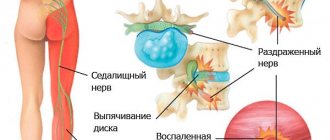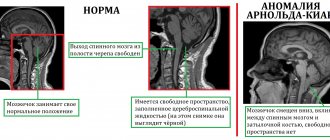Description
Dyscalculia is a violation of the ability to study arithmetic with normal intelligence.
According to ICD-10 it has code F81.2. It manifests itself as an inability to recognize digital symbols, difficulties with addition, subtraction, multiplication and division. Combined with the delayed emergence of the ability to estimate the size of objects and recognize geometric shapes. Accompanied by a lag behind the school curriculum. Dyscalculia must be distinguished from acalculia - a secondary loss of the ability to work with numbers in children and adults after severe head injury, tumor or cerebral hemorrhage. Dyscalculia is detected in childhood when a child is learning to count and belongs to the category of disorders of the development of learning skills. It is detected to varying degrees in 6% of children, and is equally common in patients of both sexes. Often combined with attention deficit and dyslexia.
Reasons for development
Counting disorders are caused by genetic, psychological or organic reasons. In practice, most children exhibit a combination of several factors.
- Hereditary burden . Children often have a parent or close relative who also has dyscalculia. The genetic basis of the disorder has not yet been established.
- Negative learning experience . Difficulty in counting occurs under the influence of excessive or age-inappropriate demands, too strict punishment for mistakes, difficulties in the relationship between the child and the parent or teacher.
- General psychological factors . Dyscalculia often develops in children from dysfunctional families, formed against the background of family physical or emotional violence, overprotection, inconsistent or harsh authoritarian upbringing.
- Organic brain lesions . The causes of dysfunction of brain structures in dyscalculia of organic origin are intrauterine infections, intoxication of the mother during pregnancy, complications during gestation and childbirth.
Pathogenesis
At the initial stage of learning, dysfunction of the intraparietal sulcus plays an important role in the development of organic dyscalculia. Subsequently, damage to the posterior associative cortex, frontal lobes and subcortical regions, as well as deterioration of interhemispheric interactions, become obstacles to learning to count. Psychogenic difficulties in learning arise from psychological neglect, fear of punishment, and lack of self-confidence.
Classification
Taking into account the predominance of one or another type of disorder, 6 types of dyscalculia are distinguished:
- Lexical . The child learns arithmetic concepts well by ear, but has difficulty working with numbers, equations and examples when he sees them on paper.
- Verbal . The patient solves written problems normally, but has difficulty when trying to name mathematical categories or recognize them by ear.
- Graphic . The student successfully uses mathematical symbols in oral speech, but is lost when it comes to writing them.
- Practognostic . The child experiences difficulties when trying to transfer concrete examples to the level of abstractions or abstractions to the level of concrete examples.
- Ideognostic . The patient cannot carry out mathematical calculations in his head. To solve, he needs a factual basis: using objects, drawing or writing data on paper.
- Operating room . Symbolization suffers. The student successfully understands numbers, recognizes “more and less,” but does not remember numbers and special signs well.
In practice, pure types of dyscalculia practically do not occur; mixed forms predominate.
Main characteristics of the violation
This specific disorder in medicine is often considered a childhood disorder, as it is diagnosed at an early age. There is a separate classification of pathology, which helps to more accurately determine the patient’s condition during diagnosis.
Description
The term dyscalculia itself stands for the inability (impossibility) to count, which absolutely accurately characterizes the condition.
The International Classification of Diseases classifies this pathology as a specific disorder of the development of learning skills. Among children aged 5 to 10 years, the disorder occurs in 6%. Peak detection of the condition occurs between ages 7 and 12, when the most intensive learning occurs and the problem becomes apparent.
Important! Both sexes suffer equally from this pathology.
The patient may suffer from a complete inability to learn mathematics or from only a partial disability in which he finds it extremely difficult to master a certain operation. In preschoolers, the condition manifests itself quite clearly in that the child begins to identify geometric shapes later than his peers.
While studying, the patient suffers from the fact that he begins to lag behind his classmates not only in mathematics, but also in all subjects that require mathematical operations.
Symptoms
Photo: mel.fm
Manifestations of dyscalculia are determined by the type of disorder and the age of the child. The first signs are detected in preschool age, when the baby begins to comprehend the simplest arithmetic concepts. The clinical picture unfolds most clearly in the primary grades, since during this period children have to intensively master counting skills. In the absence of corrective measures, violations persist in high school and middle school, and then are observed throughout life.
Preschool age
Children do not understand well what a number represents and cannot count within ten. They have difficulty comparing the sizes of objects; for example, they find it difficult to choose a smaller ball. They are not able to count objects of the same type among dissimilar objects, for example, apples in a basket of apples and oranges.
When trying to teach recognition of written numbers, a child cannot create a connection between the image and the verbal sound. Patients with dysgraphic dyscalculia experience many errors when writing numbers, especially those that superficially resemble each other. Children confuse symbols and, when writing, turn them upside down or in a mirror image.
Verbal dyscalculia is manifested by errors in recognizing similar-sounding numbers. The inability to plan and control actions with numbers is characterized by the inability to follow instructions, start counting from a certain number, or finish counting at a certain point.
Junior school age
Children cannot remember the signs “plus” and “minus”, “greater than” and “less than”. They do not understand how to write phrases used to compare numbers (for example, “less than”). Practical aids are used for calculations: sticks, fingers, pencils.
They cannot learn the multiplication table and the procedure for performing sequential mathematical operations. Some students read examples backwards, for example, in the “10-2=” problem, ten is subtracted from two. They get lost when the appearance of the problem changes (they cease to understand that this is the same example when numbers are written not in a line, but in a column).
Middle and high school age
Pupils do not master the exact sciences well. They do not understand what the essence of the task is, cannot analyze the conditions, and forget information, even when the text of the task continues to be in front of their eyes. Children have difficulty distinguishing between important and unimportant information if this information is associated with numbers and calculations.
Tables and graphs do not make it easier, but make it even more difficult to analyze digital data. In everyday life, patients find it difficult to determine the date, have difficulty calculating time and orienting themselves in unfamiliar places, cannot use maps, and have difficulty perceiving information about bus and train schedules on the corresponding boards.
How is graphic dyscalculia treated?
Some researchers also distinguish it as optical, but the working methods are the same. It manifests itself in the fact that the child cannot write down mathematical symbols on a piece of paper.
. This is primarily due to the development of high-quality hand movements. Therefore, we will develop:
- fine motor skills
fingers using the same mosaics, puzzles, lacing, laying out buttons, as well as finger gymnastics, modeling and paper cutting.
- Orientation in space
and on the plane. You can play the game “Guess where it rings.” For this you need a bell. So, the child closes his eyes, and you ring, now from the right, now from the left, now from the front, now from behind, now from above, now from below, let him answer correctly where the bell rang. And on a sheet of paper we draw a pattern in cells under dictation: one cell up, two to the right, three down, etc.
- Representation of the image of an object
and its symbol. This is the same game with guessing the prickliness of a hedgehog, the acidity of a lemon, you can come up with the softness of cotton wool and a pillow.
- Visual perception
. There are also many games for this, for example, “Guess the Lips.” You say the word and the child guesses it. You can also collect cut-out pictures and complete the missing parts of objects.
- Understanding Math Terminology
, described above.
- Analytical and synthetic activities,
where you can also draw an object in parts, naming it in words, play the game “What doesn’t fit”, offering various pictures. For example, for a teapot - a wheel, a tail, a sleeve, a lid and a spout.
- Activate visual and auditory memory
through memorizing rhymes and nursery rhymes, logorhythmic exercises.
Diagnostics
Photo: emmaclinic.ru
The diagnosis of dyscalculia is made by a neuropsychologist or psychiatrist based on a neuropsychological examination and interview of the child to determine the level of mathematical concepts. When studying the medical history, the specialist identifies possible provoking factors: organic neurological and mental disorders in the child, dyscalculia in close relatives, unfavorable educational or family environment.
To exclude other causes of learning difficulties, the level of intelligence, memory, attention, emotional and volitional qualities, and speech development are assessed. Dyscalculia is differentiated from pedagogical neglect, mental retardation, and other conditions.
Prevention of dyscalculia
Prevention of dyscalculia is relevant only when it comes to an acquired disorder. Classes to strengthen numeracy skills can be conducted both in various institutions aimed at child development and at home. There are a lot of different methods and materials for studying mathematical representation and the general intellectual development of a child. Research shows that with a properly selected program, a child quite easily masters the principle of solving mathematical problems, which means he is not at risk of dyscalculia. In the case of congenital dyscalculia, correction and training with a specialist is necessary who can build new neuropsychic connections in the child’s brain.
Treatment
Photo: onnispb.ru
Treatment of dyscalculia is carried out during psychocorrection work. The training program includes exercises that stimulate the activation of old and the formation of new neural connections in the areas of the brain responsible for counting, perceiving and distinguishing mathematical symbols, and assessing relationships between objects. The work focuses on developing the following skills:
- Spatial functions . Children are taught to navigate in space, recognize concepts related to size and direction, and determine where the left and right sides are. During the exercises, patients establish relationships between real objects and images of objects, learn the location and direction of movement of objects.
- Speech . At the initial stage, children are taught basic mathematical terms and concepts related to arithmetic operations. Then they move on to exercises on classifying objects, learning to count, and freely using numbers in conversation.
- Basics of Arithmetic . Students master basic mathematical operations, learn to reproduce them in various modalities: in oral speech, in the process of writing, when using objects. The specialist helps them master all stages of the solution, from understanding the meaning of the problem to choosing the calculation logic and its practical implementation. The division of a whole into parts and its reassembly from elements is studied. The skill of writing numbers and other mathematical symbols is strengthened.
Causes, treatment and prevention of the disorder
Depending on what caused the unpleasant phenomenon, the most effective method of correcting the condition is selected.
Causes
The main factor causing the disease is the underdevelopment of the intraparietal sulcus.
This condition is caused by certain reasons, which include:
- prematurity;
- oxygen starvation of the fetus during childbirth;
- severe toxicosis in the mother during pregnancy;
- genetic pathologies leading to disturbances in the structure of the brain;
- poor nutrition of the mother during pregnancy;
- head injuries in a child at an early age, including birth injuries;
- previous neuroinfections;
- neoplasms in the brain;
- organic brain lesions.
Also, the condition can develop against the background of a general developmental delay and in the presence of psychotraumatic factors. In addition, dyscalculia can also be provoked by severe psycho-emotional shock, which appeared during the period of initial mastery of arithmetic due to severe coercion and punishment.
Folk remedies
There are no traditional methods for treating dyscalculia. It is possible to do independent homework with young children, helping to prevent the development of mild forms or mitigate the course of more severe disorders. To prevent various types of dyscalculia, the following methods are used:
- Practognostic . Solving simple problems with pronouncing arithmetic operations and simultaneous use of visual aids: sticks, pencils, fingers.
- Graphic . Fine motor skills training.
- Verbal . Memorizing the names of numbers and arithmetic operations, repeating material during a conversation.
- Dyslexic . Studying sizes and shapes, games to recognize numbers and mathematical symbols.
- Operating room . Memorizing and reproducing calculations, using mathematical terms during a conversation.
The information is for reference only and is not a guide to action. Do not self-medicate. At the first symptoms of the disease, consult a doctor.
Classification and types of dyscalculia
- Verbal dyscalculia is a violation of the verbal designation of mathematical concepts.
- Lexical dyscalculia is a disorder in reading mathematical symbols.
- Graphic dyscalculia is a violation of the recording of mathematical symbols or signs, as well as a violation of the correct reproduction of geometric figures.
- Operational (or ideological) dyscalculia is the inability to operate with numbers and perform simple mathematical tasks.
- Practognostic dyscalculia is the inability to count or compare concrete, visual objects or their symbols.








